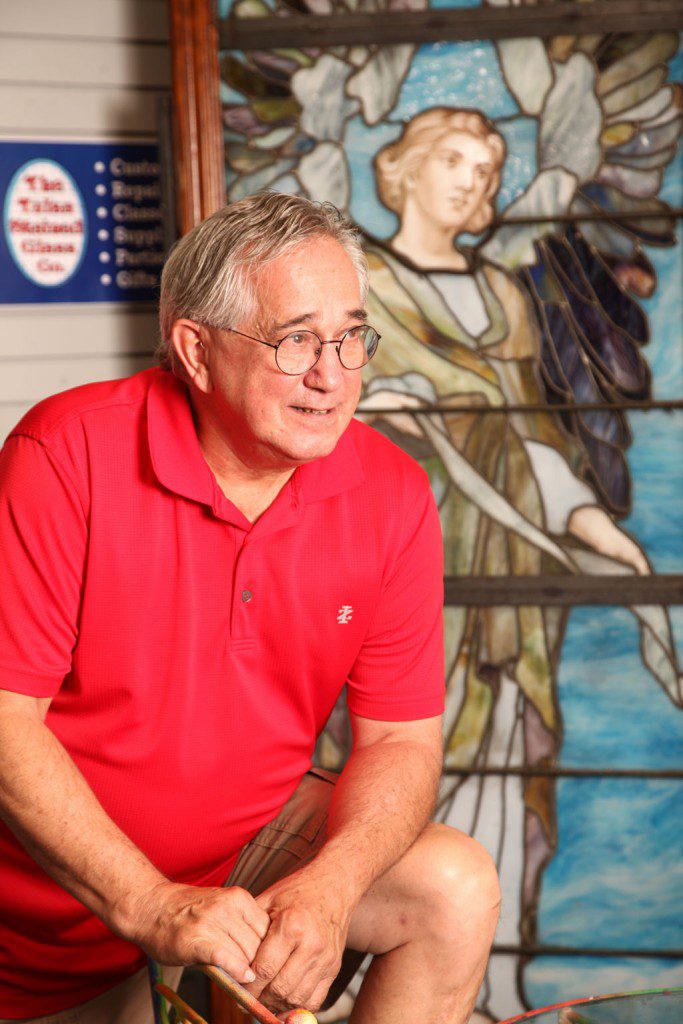In the more than 40 years that he has worked with stained glass, Richard Bohm has created family and institutional treasures.
In 1975, Bohm and his wife started Tulsa Stained Glass, making custom art to display in homes, business and churches. Bohm has designed stained glass for Boone Pickens Stadium at Oklahoma State University, Boston Avenue Methodist Church in downtown Tulsa and the Children’s Hospital at Saint Francis in south Tulsa.
“I always encourage the client to think about how to make this stained glass more meaningful to them and have been doing that for years,” Bohm says. “We’ve had customers take windows from house to house to house and box it up and they retire and take it to Florida.
“It’s kind of nice that people value your work, and when you can put a meaning behind something that … is the highest level of art that you can do. You can go to school, you can increase your skill level and be the best at what you’re going to do, but if you can take that to the next level of making it meaningful, then you’ve achieved success.”
In addition to working on commissioned pieces, Bohm helps others get in touch with their creative sides through classes that he teaches.
“There’s a whole other process that many have lost, and that’s the creative process of design,” he says. “So what I do is when my students come in to class, before they ever sit down and learn about the glass itself, we do finger painting. They do finger painting based on my guarantee that I’m going to help them turn those finger paintings into a stained glass design.
“They’re painting shapes, colors, forms. Through this, what I get to teach is art elements and art principles – all those types of things that people might not normally use in their everyday life.”
During these three-hour classes, students create garden spirit sculptures and learn the basics of making stained glass. Bohm says people take the class for a variety of reasons, from date nights and birthday celebrations to coping with grief. He says the process can be therapeutic.
“I teach them how to take chaos and turn it into harmony,” he says. “Harmony is a repetition of line, shapes and color. It’s turning noise into music and turning chaos into organization. When you have organization, it becomes peaceful. If you can learn to do this yourself and have that process in your head of how to do it visually, maybe someone is going to get the idea, ‘You know, I don’t like my life the way it is; maybe if I can get some organization and apply these same kinds of rules, maybe I can change my life.’ That’s the way we’re going to change the world.”
Creating Color
Most of the glass used at Tulsa Stained Glass comes from Kokomo, Indiana, as well as some from Germany and the Czech Republic. The glass has a wide variety of textures, opacities and, perhaps most importantly, colors.
“All glass has some core ingredients – sand, soda, ash, lime. They heat it up, and they make glass,” Richard Bohm says. “But, if you want to make colored glass, you add metallic oxides to the dry batch and then mix it up. Then it goes into the furnace [at] 3,000 degrees. [The color] is all in the core before it’s ever made. That’s why it lasts so long. I mean, you can’t take that color out. It just gets richer.”


























